BASIC OFFER
The paintings we offer are available in two widths, depending on the image’s orientation:
– Landscape paintings are 95 cm wide
– Portrait paintings are 65 cm wide.
The price of the paintings does not depend on the width, but on whether they are printed on canvas or paper, and on the type of frame or frameless frame.
Their height varies and depends on the proportions specified by the artist.
The price for both widths is the same and is:
– Canvas print on a roll: PLN 490.00 / 1 m²
– Canvas print on stretcher bars: PLN 590.00 / 1 piece
– Canvas print with Pergamena frame: PLN 550.00 / 1 piece
– Double-sided laminated paper print with Pergamena frame: PLN 470.00 / 1 piece
FRAMES
We do not sell framed paintings. The frames shown in the painting visualizations are for illustrative purposes only and are not part of our sales offer.
AUTOGRAPH
Paintings from our gallery are signed by the artist on each canvas and confirmed by a certificate of authenticity.
LARGER FORMAT PAINTINGS
We also offer paintings in larger formats. They are sold only in rolls for individual framing.
The cost of larger format paintings is the painting’s surface area in m², calculated including a 6-centimeter margin, multiplied by PLN 490.00. For example, the actual canvas dimensions of a 110 cm x 80 cm painting, including the margin for framing, are 122 cm x 92 cm.
Due to technical constraints, the maximum height of landscape paintings offered is 135 cm, and the maximum width of portrait paintings is 135 cm.
Additionally, we add domestic shipping costs of PLN 15 for rolls and bound parchments, and PLN 35 for stretcher paintings. International shipping costs are calculated individually depending on the country and carrier.
PERGAMENA BINDING
Pergamena Publishing’s stylized binding – a form of framing characterized by proprietary technical solutions and an original composition of design details. The binding evokes the traditional method of hanging wall publications on wooden rods. The supporting rods are inserted at the top and bottom of the publication into sleeves created by folding the material and joining it lengthwise with decorative rivets. The rods are topped with wooden knobs with metal fittings, to which a decorative hanging cord is attached at the top. The lower part of the painting is stamped with a synthetic sealing wax image of the Piast eagle, suspended on strings.

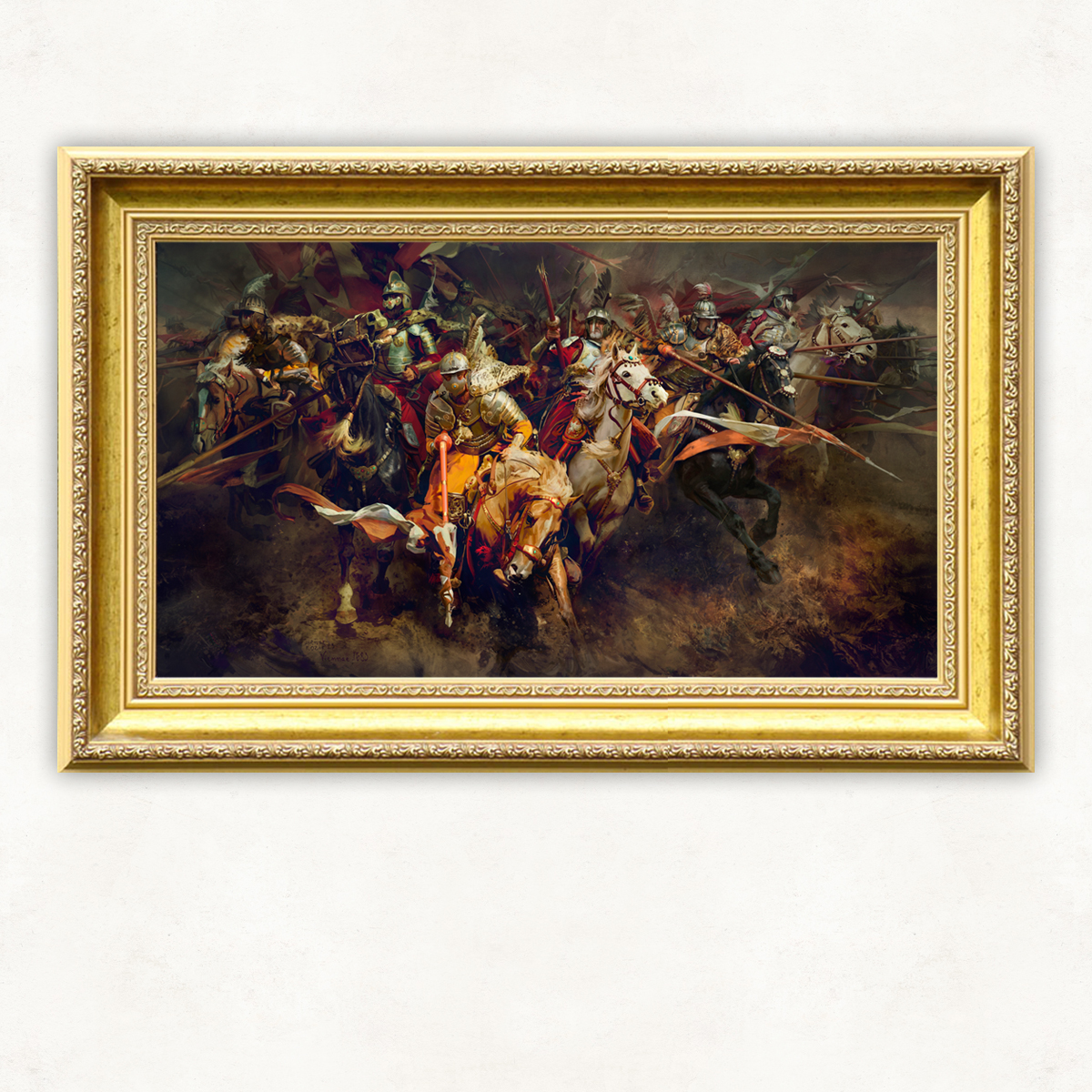
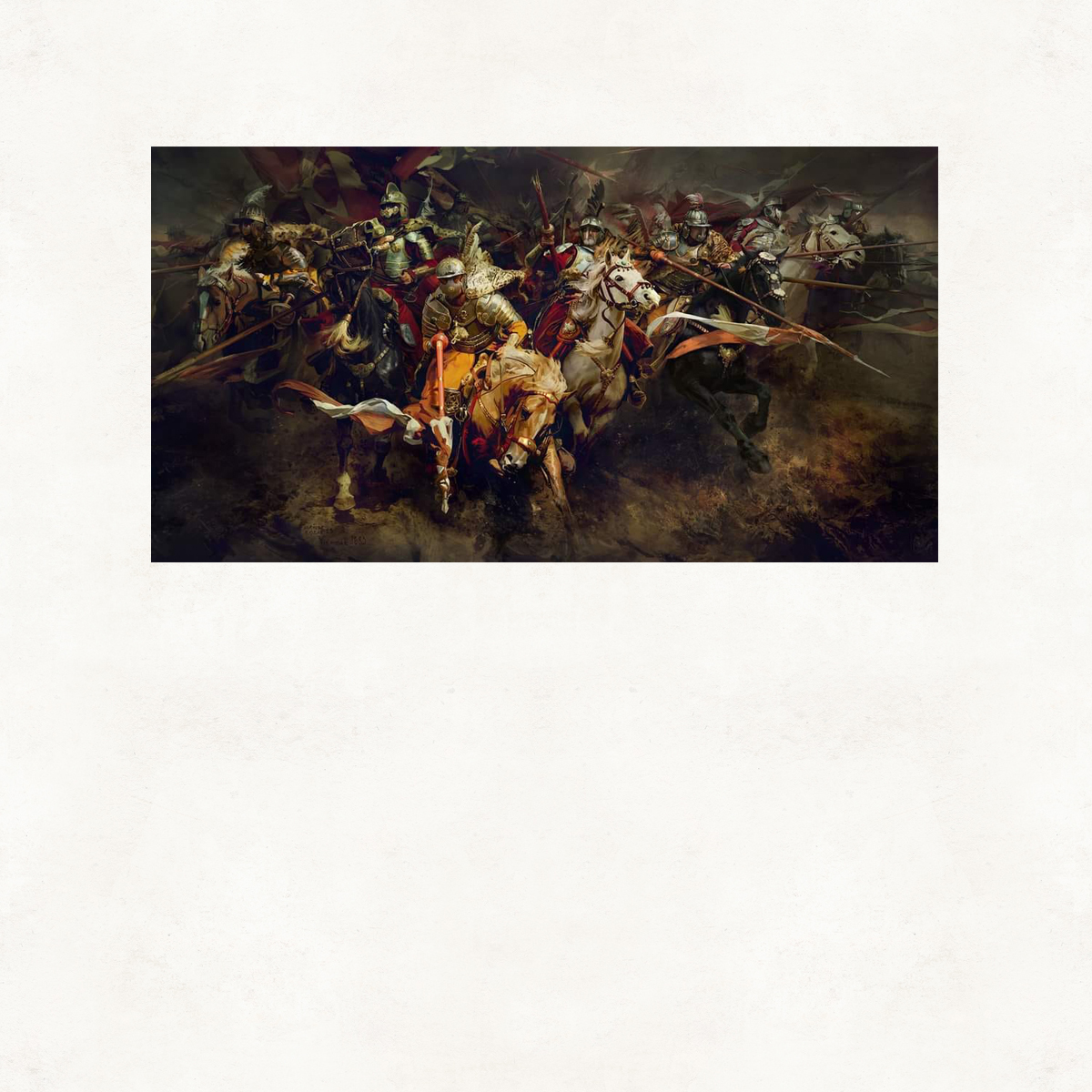
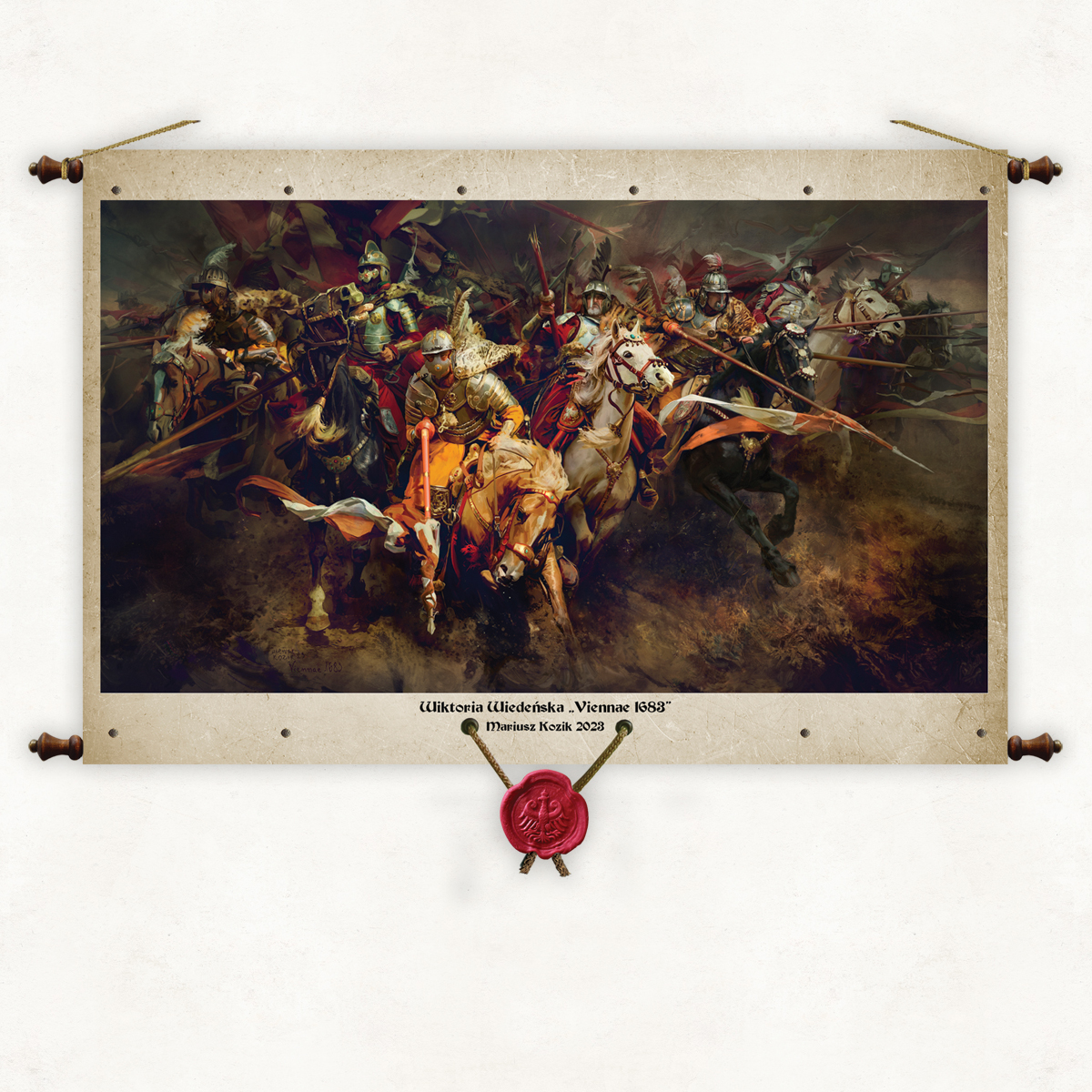
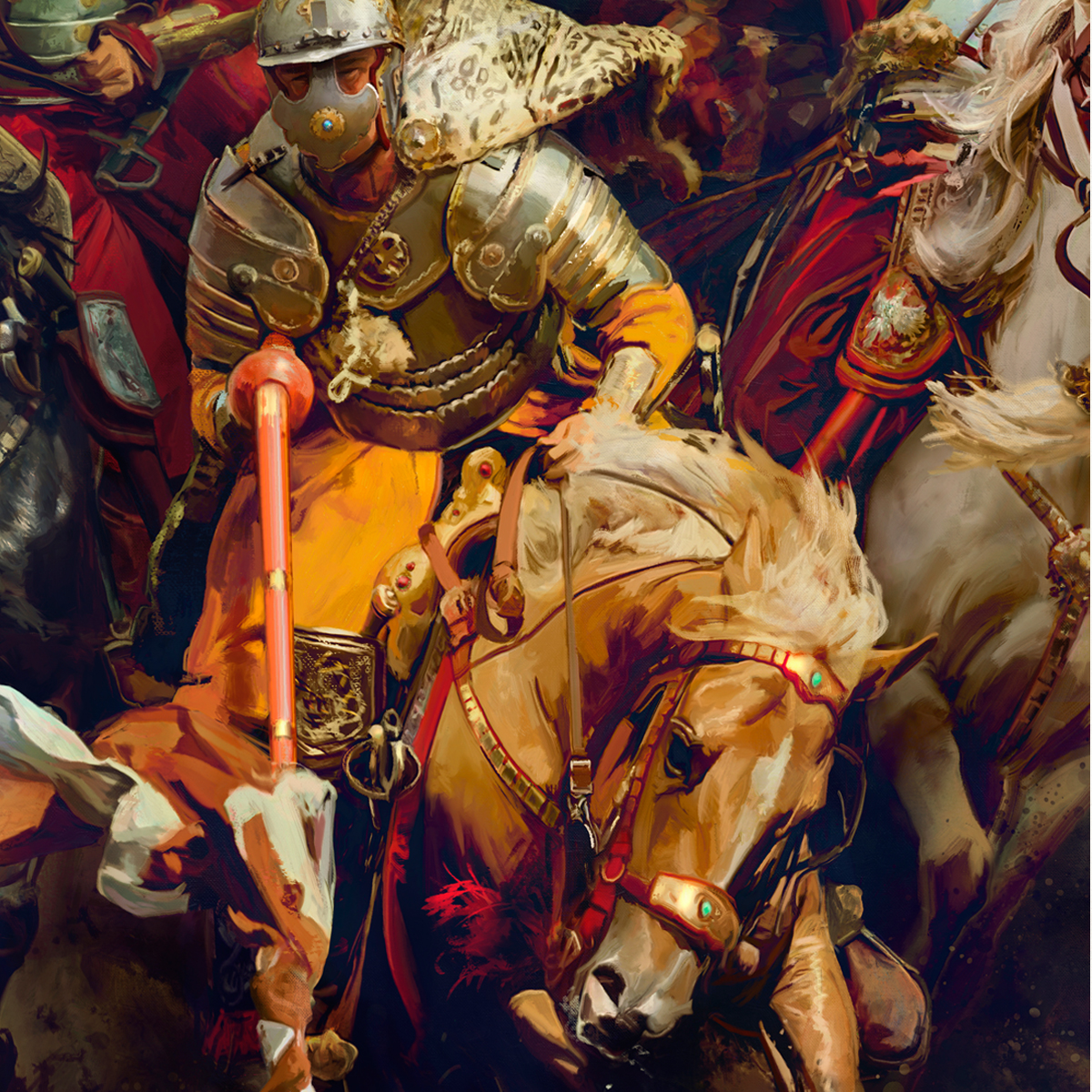
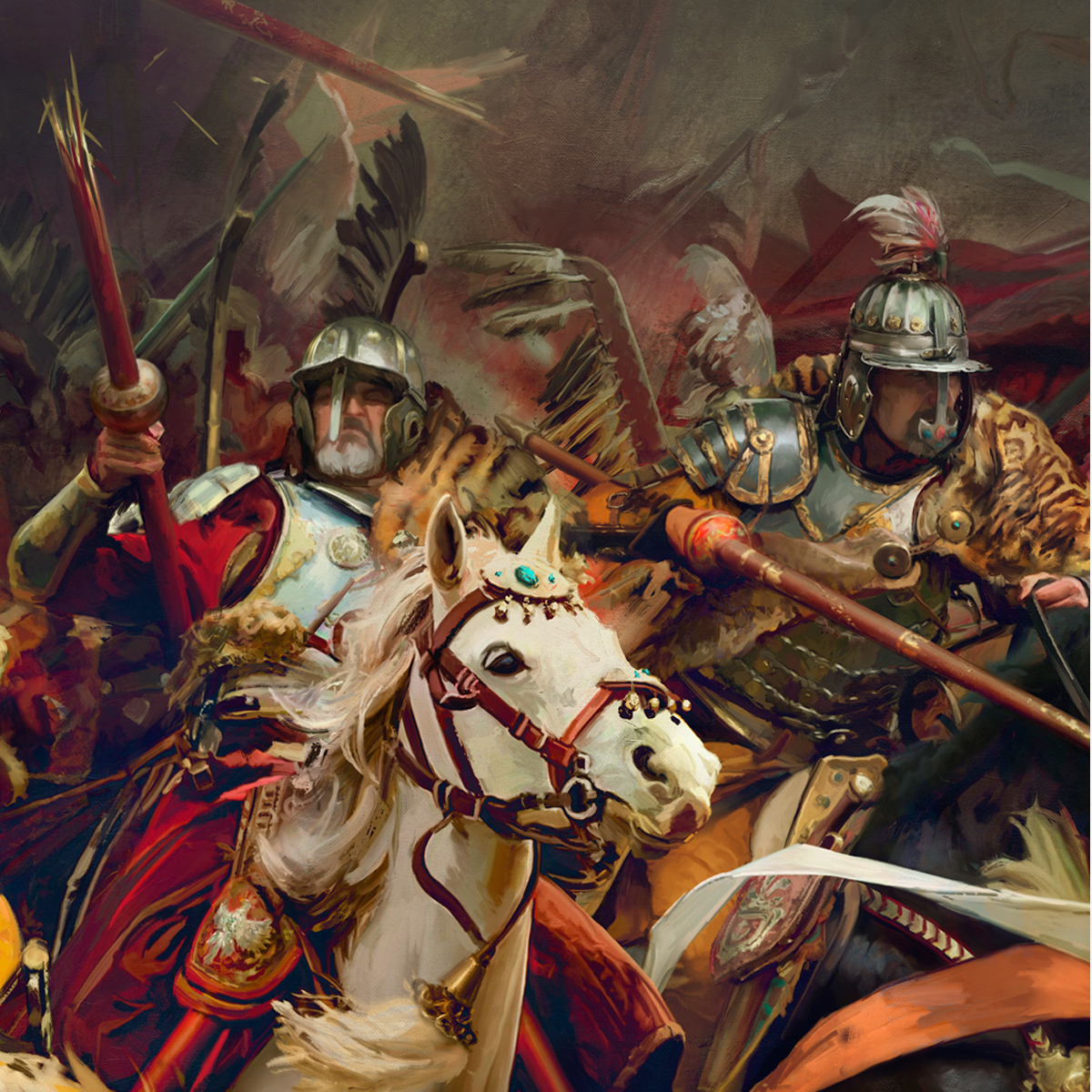
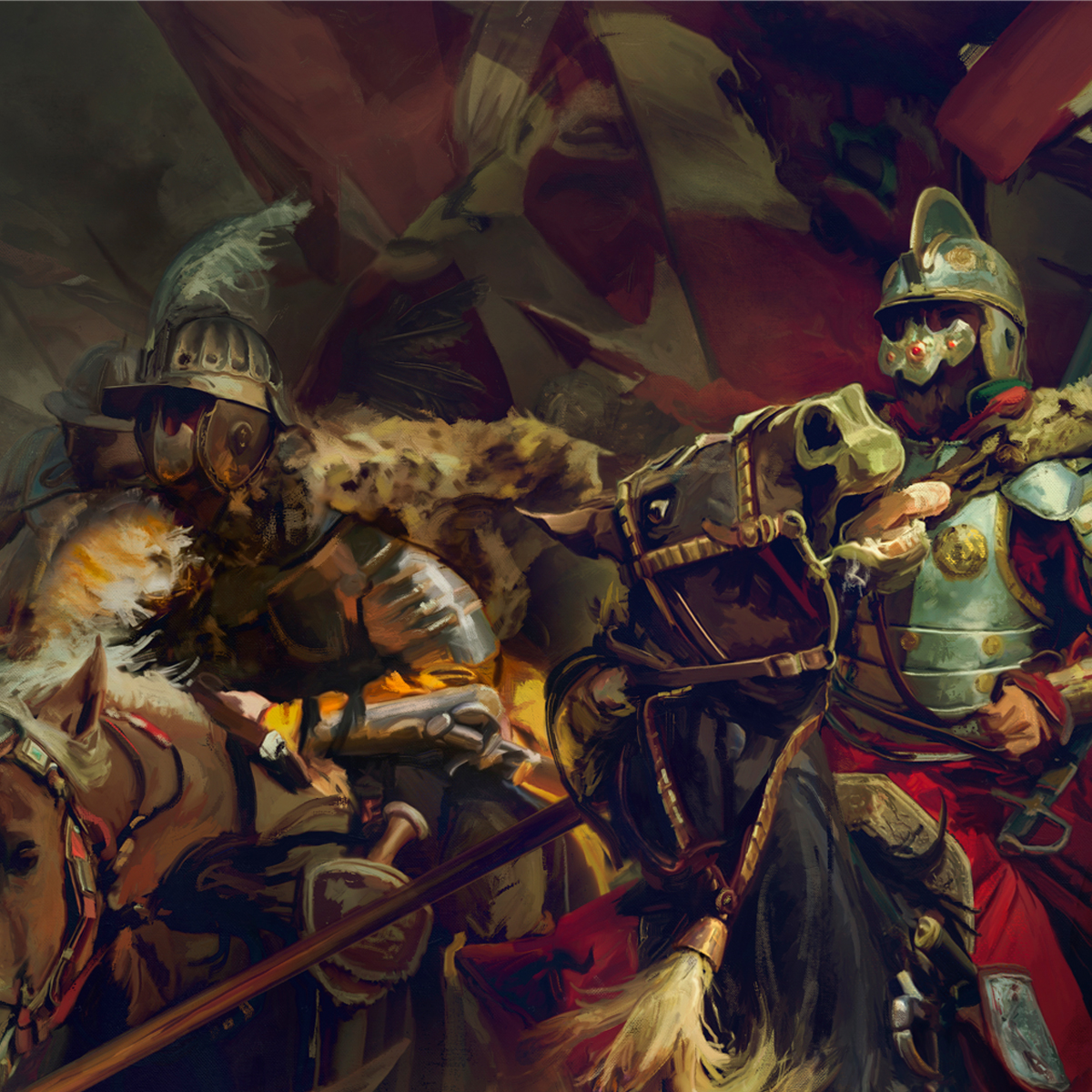
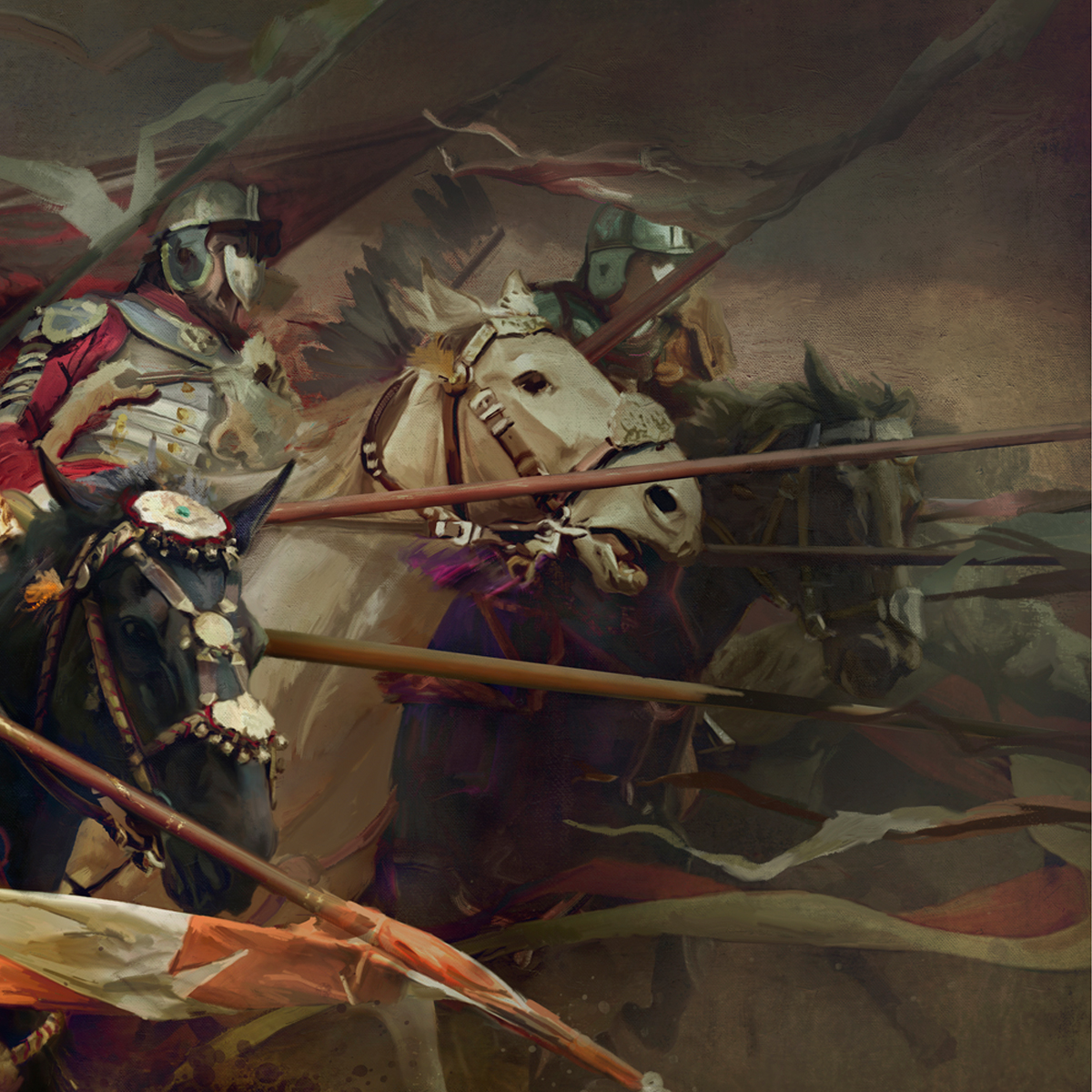
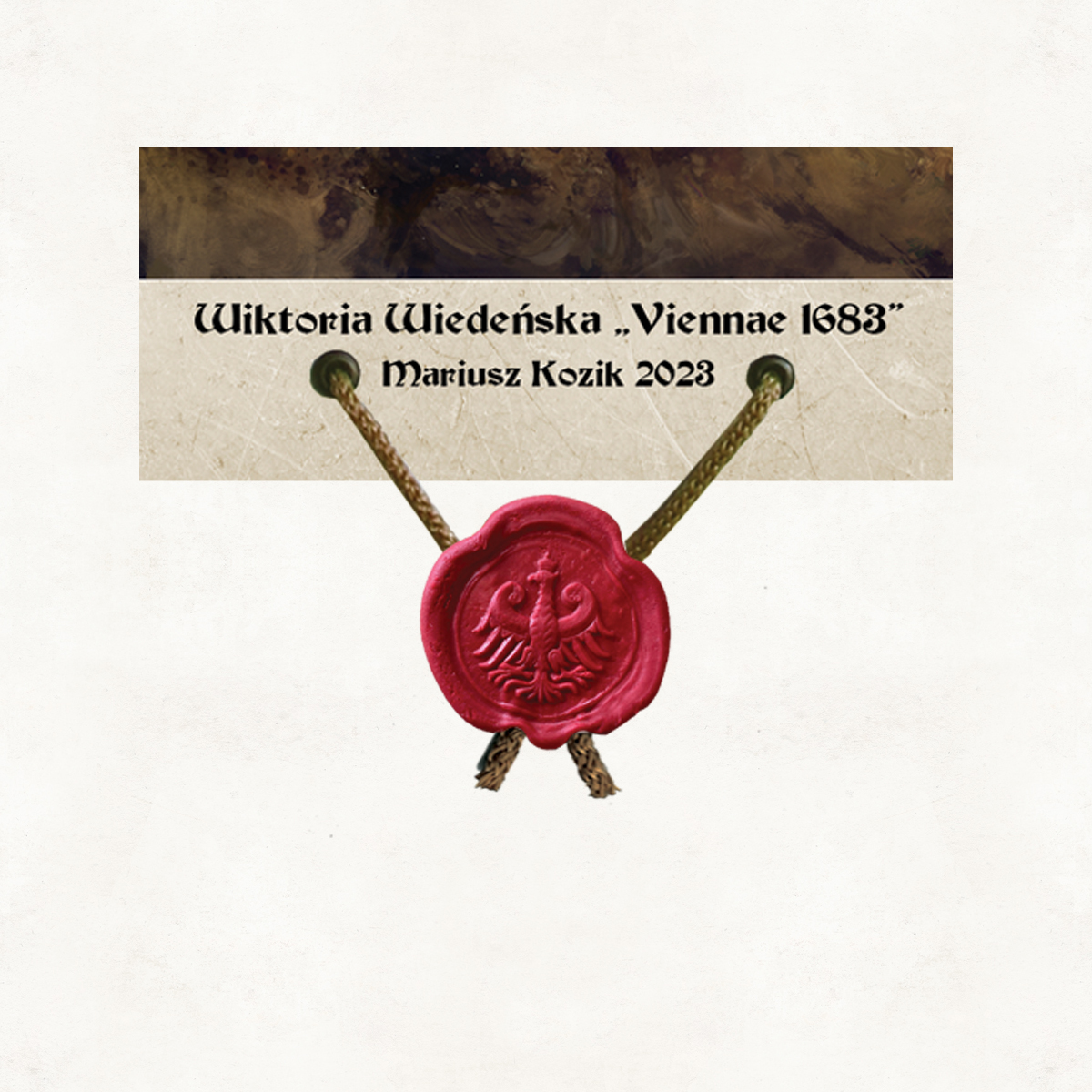
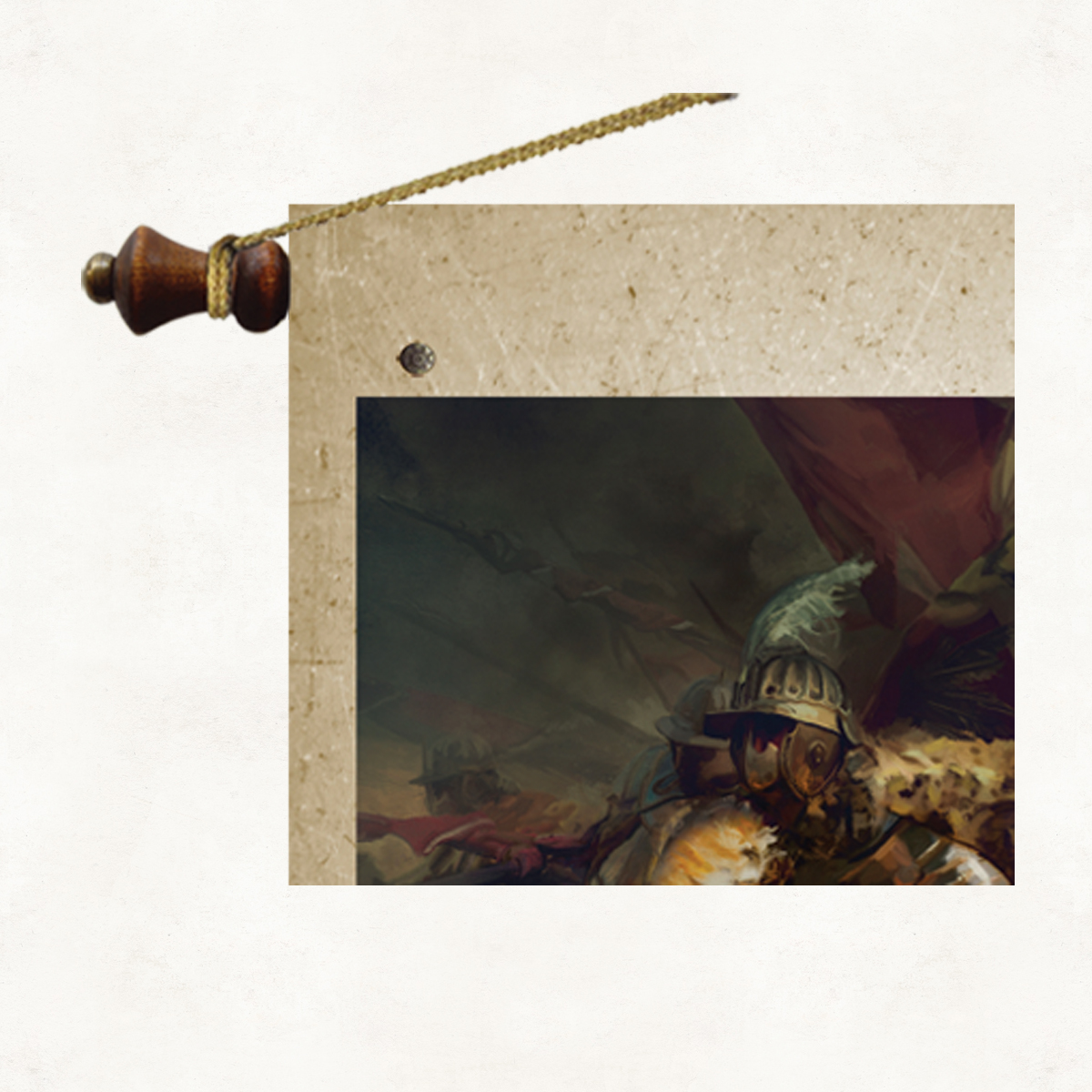
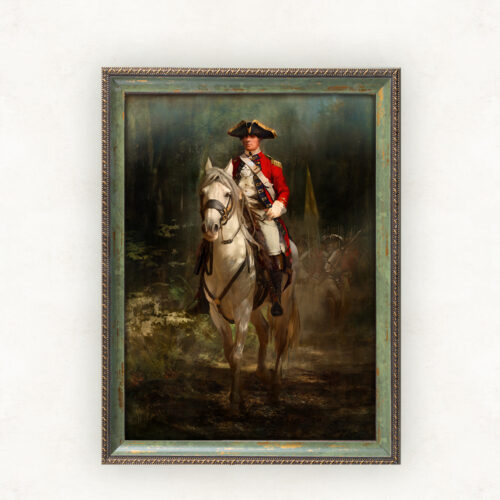
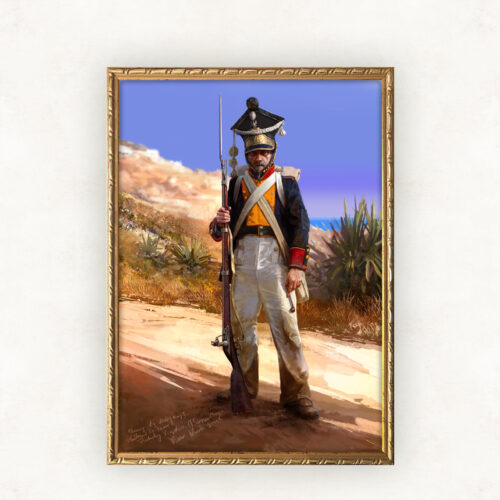
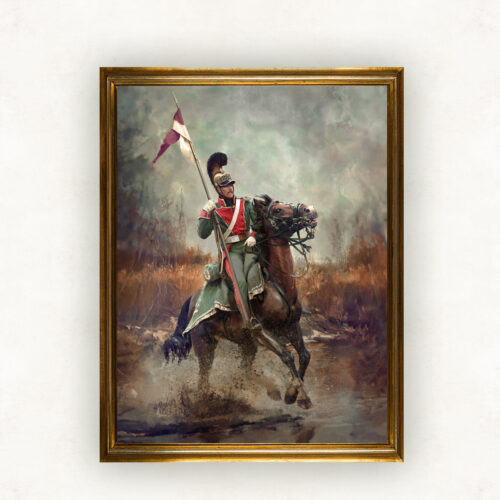
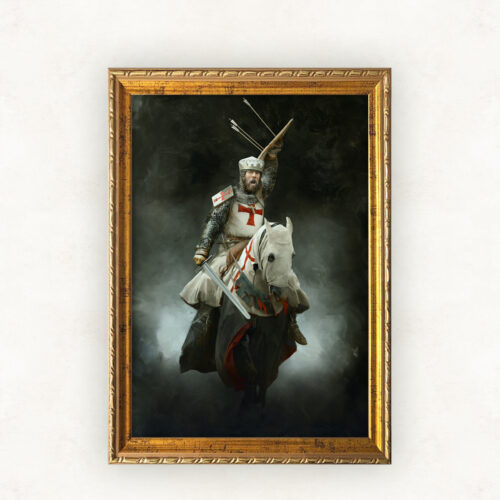
Reviews
There are no reviews yet.